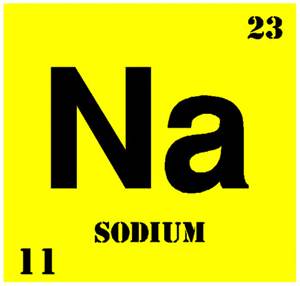How do you find the number of protons and neutrons and electrons of a particular atom, if all you are given is the atomic number and the mass number?
1 Answer
Here's how
Explanation:
You can simply subtract the atomic number from the mass number in order to find the number of neutrons. If the atom is neutral, the number of electrons will be equal to the number of protons.
Remember!
1. Your mass number is the total number of neutrons and protons within the atom.
2. Your atomic number is the amount of protons within the atom.
3. For neutral atoms, the electron number is the same as the atomic number.
Example:

This is the sodium atom.
The mass number is typically found at the top. (You might see it at the bottom in the periodic table) and the atomic number at the bottom.
Atomic number/number of protons = 11
Mass number/sum of protons and neutrons = 23
Number of neutrons = 23-11= 12
Number of electrons = 11 (since the sodium atom is neutral)

